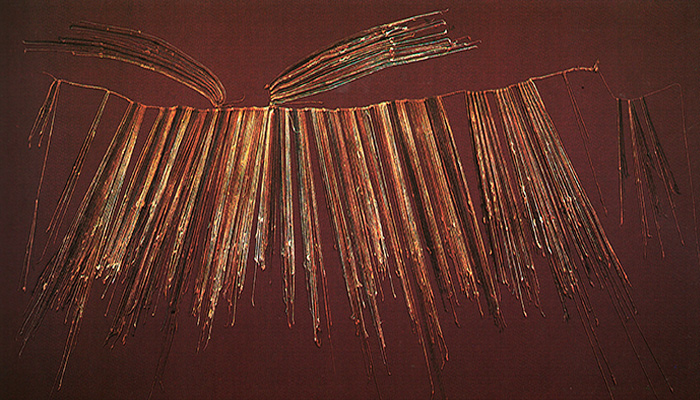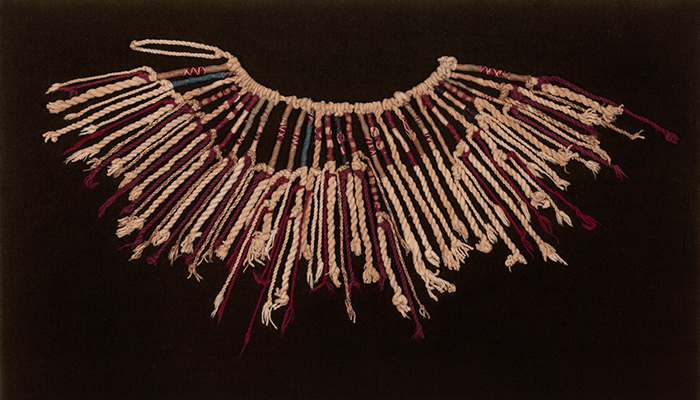Quipu: Counting with knots in the Inka Empire – 2003
- Record-keeping with knots
- The quipu and writing
- Tawantinsuyu , the Inka Empire
- The Quipu, and the needs of an empire
- Quipus and tribute
- Basic parts of a Quipu
- Making a Quipu
- Quipus and numerical values
- Narrative Quipus?
- Los distintos usos del Quipu
- Quipu of Arica
- Quipucamayoc , Lord of the Knots
- Quipus in the colonial era
- Epilogue
- To know more about Quipus
- Crédits and acknowledgements
Record-keeping with knots
The ancient Andean states are considered to have been the only civilizations of antiquity to have lacked a graphic writing system. However, the Inkas invented, or inherited, the quipu (“knot” in Quechua, the language of the Inkas), an ingenious knotted-string device for record-keeping throughout the Empire. Those State officials who made and kept quipus were called quipucamayocs.
After subjugating the Inka Empire in 1532, the Spanish conquistadors soon learned of the quipus, and in time discovered that the information they contained included statistical, quantitative records, as well as narrative accounts; in other words, information ranging from census records and tribute accounts to genealogies, poems, songs and the deeds and exploits of prominent empire figures.
Currently, there are approximately 600 quipu samples retained in public and private collections around the world. Deciphering the information they contain is a long and arduous task, and still far from complete. We may be able to say that a given string on a quipu contains the numerical value 234, but we cannot yet answer the question, “234 what?” In addition, we have not yet succeeded in deciphering the recording units and the means whereby the quipucamayocs recorded information for narrative readings of myths, histories, or genealogies. Thus, while we have a large quantity of Inka archives, only recently are we learning the rudiments to read them. Those engaged in the attempt to decipher the quipus face the challenge of demonstrating that the Inka administrators and “historians” maintained in these knotted-string devices a true system of writing.






































